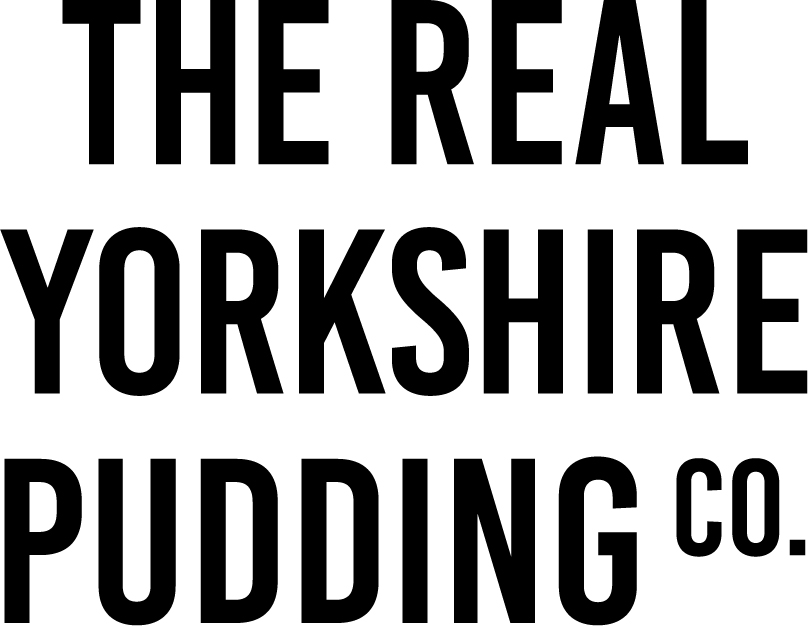Title Page
-
Document No.
-
Audit Title
-
Client / Site
-
Conducted on
-
Prepared by
-
Location
-
Personnel
M&S PREMISES October 2017 v3
M&S 1. 0 Site Perimeter areas
-
The perimeter and external areas must be able to be cleaned and inspected and allow appropriate pest control and must not present a risk of product contamination.
M&S 2.0 Design and Construction of Premises and Equipment
-
2.1 The structure and fabric of the premises must be fit for purpose, and together with all machinery, equipment and fittings, must be designed and constructed of materials to ensure they are capable of being effectively cleaned (and disinfected where required). The external facing structure must be designed to prevent pest ingress.
-
2.2 Food contact equipment must be designed to enable the correct level of strip down and cleaning in the area it is situated. Equipment must be maintained so that normal levels of wear do not pose a foreign body hazard.
-
2.3 All services (including air lines, pipework, cabling etc.) must be able to be cleaned effectively within the area it is situated and where it enters the inside of the factory from the outside it must be proofed to prevent pest ingress.
-
2.4 Where there is a risk of damage to walls / kerbs, a suitable barrier should be in place.
-
2.5 All internal and external facing windows and doors must be risk assessed for likelihood of damage and risk to product and where doors and windows are designed to be opened to the outside suitable proofing must be in place to prevent pest ingress
-
2.6 Lighting must be fit for purpose (and may include daylight or high lux lighting in inspection areas). All lights must be protected by shatterproof covers or sleeves which contain any breakage.
-
2.7 Layout and product flow must be logical and designed to prevent the risk of cross-contamination to any product, either from other products, people or the factory environment.
M&S 3.0 Air Quality & Ventilation
-
3.1 Adequate ventilation is necessary to ensure clean and dry air is provided to the factory to prevent ingredient or product contamination.
-
3.2 Air handling systems, including the ductwork, must be subject to routine maintenance, cleaning and disinfection to maintain performance.
-
3.3 Systems must be hygienically designed and ideally constructed with stainless or galvanised steel internal surfaces. Suitable access must be provided for cleaning and the system must be insulated to prevent condensation. Special cleaning attention is required for the return air duct.
-
3.4 Equipment/tray washing rooms and cooker extracts must be ventilated directly to the outside. Provision should be made for adequate air supply when installing air extracts to ensure a balanced system.
-
3.5 The use of air socks rather than ceiling diffusers needs to be carefully managed. They should be sited to avoid splashing from products. They should be of polypropylene or polyester rather than cotton which is likely to shrink. They should be regularly inspected internally and externally e.g. monthly, and laundered as required – minimum twice yearly.
-
3.6 Filters must be carefully selected and installed in leak free frames. Rigid media filters are generally the most suitable. Filters manufactured with a cardboard frame must be avoided.
-
3.7 Whenever possible, the final filtration should be located on the pressure side of the fan. Side access holding frames should also be avoided.
-
3.8 To avoid rapid blockage of final filters, intake air must be pre-filtered to G4 minimum.
-
3.9 Where powdered ingredients, or similar materials are used, dust extraction equipment and/or suitable personnel dust protection must be in place.
M&S 4.0 Engineering and Maintenance
-
4.1 There should be separate engineering and storage facilities for both the Low Risk and High Care/High Risk sides of the premises.
-
4.2 Engineering workshops and storage areas must be maintained to a high standard of hygiene, housekeeping and fabrication.
-
4.3 A programme of planned, preventative maintenance must be carried out on all key equipment and services. Schedules should be set according to manufacturer’s recommendations, equipment risk and history of issues.
-
4.4 Stocks of critical machine parts must be maintained.
M&S 5.0 Refrigeration
-
5.1 All temperature controlled storage facilities must be subject to continuous temperature recording and must be suitably alarmed in the event of breakdown.
-
5.2 For chilled products, the assembly of finished products should take place in an environment normally running below 12°C. Where this temperature is not achieved, appropriate procedures must be in place and documented to ensure that the temperature of chilled raw material, component and product does not rise above 10°C (e.g. shorter time exposure).
-
5.3 For frozen products assembled in a chilled area, the assembly environment must be running below 12°C. For frozen products assembled in a Low Risk environment, once assembled freeze rapidly to colder than - 18°C.
-
5.4 Despatch temperatures (environmental and product temperatures)<br>Chilled despatch temperature is ≤ 5°C (or colder depending on legal requirements e.g. poultry, egg)<br>Frozen despatch temperature is ≤ - 18°C
M&S 6.0 Personnel Requirements and Facilities
-
Employee facilities (toilets, wash hand basins, changing areas, smoking facilities and canteen or rest room areas) must be suitable for the number of staff and the nature of the operation.
M&S 7.0 Drainage
-
7.1 The factory building must be provided with adequate and effective drainage. Drains should have sufficient falls and should flow from clean areas to ‘dirtier’ areas. Where appropriate, drains should have an effective trap.
-
7.2 Drains and their grids/covers must be able to be effectively cleaned.
-
7.2 Manholes present in open-food areas must be sealed and air-tight.
TFMS Section 8 Design and construction of premises v6
-
8.1 External structure and fabric<br>The structure, fabric, location and layout of buildings must not pose a risk to the product (e.g. contamination.)
-
8.2 Internal structure<br>Walls, floors, ceilings, drains and doors must be designed and maintained to allow effective cleaning. They must be maintained in a good condition to prevent foreign object risks.
-
8.2.1 (Medium) Internal structure <br>Walls, floors, ceiling, drains and doors must be constructed of impervious materials. Wall/floor junctions must allow easy cleaning and prevent build-up of debris. Fabrication joints must be sealed and free from mould so as not to pose a foreign object risk. Floors must be anti-slip.
-
8.2.2 (High) Internal structure <br>Wall/floor junctions must be coved. There must be a floor to ceiling physical barrier between High areas and non-High areas. Openings between High areas and non-High areas must be kept to a minimum. Internal lifting doors must not be in contact with the ground. Where openings exist they must be managed to minimise the risk.
-
8.3 Floor gradients<br>Pooling water which may lead to splashing and contamination must be managed to ensure it poses no risk to the product.
-
8.4 Drains<br>Drains must be accessible for cleaning.
-
8.4.1 (Medium) Drains <br>A drain plan must be available for the site.
-
8.4.2 (High) Drains <br>Drains must flow from High to Base areas. A system must be in place to prevent backflow.
-
8.5 (Medium) Walkways <br>Walkways and steps over production lines must be designed to prevent product contamination (e.g. steps are fitted with back plates and enclosed sides.)
-
8.6 External Doors<br>All external doors must be effectively proofed against pests.<br>Where strip curtains are fitted they must be full length (but not in contact with the floor), intact, and kept clean.
-
8.6.1 (Medium) External doors <br>External doors (including lifting (roller shutter) doors) in open food handling areas must be intact and not used for general access. External doors opened to provide ventilation must be suitably controlled e.g. a close fitting mesh screen is in place across the doorway.
-
8.6.2 (High) External doors <br>External lifting (roller shutter) doors must not be permitted.
-
8.6.3 (High) Removable wall sections <br>Where used for the introduction/removal of large equipment, removable wall sections between the High and Base areas must be close fitting and sealed each time after opening. A full deep clean of the High area environment must be undertaken if the removable wall section is removed.
-
8.6.4 (High) Fire doors <br>Fire exits must be alarmed or tamper evident.
-
8.7 Lighting<br>Lighting in all areas must enable safe working and good visibility. Adequate lighting must be in place above product inspection areas.
-
8.8 Ventilation and extraction<br>Heating, ventilation and extraction systems must be effective at preventing condensation and excessive dust.
-
8.8.1 (Medium) Ventilation and extraction <br>A documented risk assessment must be conducted to determine the requirement for air filtration.<br>Where air filtration is in place, filters must be regularly inspected and replaced.
-
8.8.2 (High) Ventilation and extraction <br>A system must be in place to maintain positive air pressure from High to non-High areas where the products in the area meet all the following criteria: product is uncovered or open, therefore exposed to potential contamination product is ready to eat or ready to heat product can support the growth of pathogenic bacteria, e.g. Salmonella, E.coli, Listeria, product has undergone full cooking equivalent to 70°C for 2 minutes, prior to entering the High area The total number of air changes must be risk assessed based on the size of the area, number of personnel and the equipment used.
-
8.9 Evaporator socks<br>Evaporator socks must be cleaned and maintained at a scheduled frequency.<br>The frequency must be adequate to prevent build-up of debris/mould growth.
-
8.9.1 (High) Evaporator socks <br>Evaporator socks for High areas must be identifiable and dedicated. High and Base area air socks must be washed separately.
-
8.10 Services<br>All services must be designed from material suitable for the purpose and appropriate to the area where used, intact and allow easy and effective cleaning.<br>This must include if present, although this is not an exhaustive list:<br> pipework for water/gas/compressed air<br> electrical cabling/conduit/sockets<br> ventilation ducting, compressors/pumps, fire sprinkler systems
-
8.11 Storage areas<br>Storage areas must be fit for purpose and maintained in a clean and hygienic condition.<br>Materials must not be stored directly in contact with the floor or against the walls to allow inspection, prevent contamination, and prevent pest harbourage.
-
8.12 Temperature controlled areas<br>Construction and fabrication of walls, floors and ceilings must be suitable for the purposes of retaining temperature.<br>Where automatic doors are fitted, they must close in a safe but timely manner that minimises the loss of temperature control in the area.<br>Condensate from evaporators must flow to drain and not drip on product.
-
8.12.1 (Medium) Temperature controlled areas <br>Where appropriate, any risk of backflow through condensate drainage into the evaporator must be prevented.
-
8.12.2 (High) Temperature controlled areas <br>Where appropriate, a risk assessment must be carried out to determine if chemical sanitising rings are required in condensate drip trays.
-
8.13 Production offices<br>Production offices (including testing and first aid rooms) with direct access to production and storage areas must be managed so that they do not pose a risk to product.<br>The rules for stationery items (pens, rulers etc.) in these offices must be consistent with site requirements.<br>Eating and drinking is not permitted in these offices, with the exception of drinking-water, and product sampling.
BRC 4.4 BUILDING FABRIC, RAW MATERIAL HANDLING, PREPARATION, PROCESSING, PACKING AND STORAGE AREAS v7
-
4.4.1 Walls shall be finished and maintained to prevent the accumulation of dirt, minimise condensation and<br>mould growth, and facilitate cleaning.
-
4.4.2 Floors shall be suitably hard wearing to meet the demands of the process, and withstand cleaning<br>materials and methods. They shall be impervious, be maintained in good repair and facilitate cleaning.
-
4.4.3 Drainage, where provided, shall be sited, designed and maintained to minimise risk of product<br>contamination and not compromise product safety. Machinery and piping shall be arranged so that,<br>wherever feasible, process waste water goes directly to drain. Where significant amounts of water are<br>used, or direct piping to drain is not feasible, floors shall have adequate falls to cope with the flow of any<br>water or effluent towards suitable drainage.
-
4.4.4 Where sites include high-risk or high-care facilities, there shall be a map of the drains for these areas<br>which shows the direction of flow and location of any equipment fitted to prevent the back-up of waste<br>water. The flow of drains shall not present a risk of contamination of the high-risk/care area.
-
4.4.5 Ceilings and overheads shall be constructed, finished and maintained to prevent the risk of product<br>contamination.
-
4.4.6 Where suspended ceilings or roof voids are present, adequate access to the void shall be provided to<br>facilitate inspection for pest activity, unless the void is fully sealed.
-
4.4.7 Where there is a risk to product, windows, and roof glazing which is designed to be opened for<br>ventilation purposes, shall be adequately screened to prevent the ingress of pests.
-
4.4.8 Where they pose a risk to product, glass windows shall be protected against breakage.
-
4.4.9 Doors shall be maintained in good condition:<br>• External doors and dock levellers shall be close fitting or adequately proofed.<br>• External doors to open product areas shall not be opened during production periods except in<br>emergencies.<br>Where external doors to enclosed product areas are opened, suitable precautions shall be taken to<br>prevent pest ingress.
-
4.4.10 Suitable and sufficient lighting shall be provided for correct operation of processes, inspection of<br>product and effective cleaning.
-
4.4.11 Where they constitute a risk to product, bulbs and strip lights – including those on electric fly-killer<br>devices – shall be adequately protected. Where full protection cannot be provided, alternative<br>management such as wire-mesh screens or monitoring procedures shall be in place.
-
4.4.12 Adequate ventilation and extraction shall be provided in product storage and processing<br>environments to prevent condensation or excessive dust.
-
4.4.13 High-risk areas shall be supplied with sufficient changes of filtered air. The filter specification used and<br>frequency of air changes shall be documented. This shall be based on a risk assessment, taking into<br>account the source of the air and the requirement to maintain a positive air pressure relative to the<br>surrounding areas.
Morrisons 4.4 Building fabric v4
-
4.4.14 Air conditioning/ventilation for high care/risk operations shall incorporate high<br>efficiency filtration which is appropriately maintained. Filtration should comply<br>with (expressed in accordance with EN779 and EN1822) F7 - F9 for high care<br>and F9-H12 for high risk.
-
4.4.15 High care/risk areas shall maintain positive pressure such that all air movements<br>are in the direction from high care/risk to low risk. Positive air pressure shall be<br>demonstrable at all product and equipment transfer points and a system shall be<br>in place to regularly monitor and record positive pressure.
-
4.4.16 Air inlets/outlets shall be located so as not to pose a risk of contamination.
-
4.4.17 Air filtration/conditioning shall be regularly maintained, kept in a clean condition<br>and subject to microbiological monitoring. Where used, air socks shall be<br>cleaned and maintained on a scheduled frequency.
-
4.4.18 Evaporator units must be hygienically designed, positioned, constructed and<br>maintained to minimise the risk of contamination of product, packaging and/or<br>equipment. Condensate drainage must be piped and flow direct to drain and not<br>drip on product, ingredients, packaging or production equipment.
-
4.4.19 All doors shall be kept closed when not in use and, where necessary, shall be<br>fitted with self closing devices. Where doors are required to be left open, for<br>example goods inward/despatch areas they shall be protected with overlapping<br>plastic curtains that reach to floor level.
-
4.4.20 Where roller doors, rise and fall doors or similar and strip curtains are used in<br>open food areas they shall not touch the floor to avoid potential transfer of<br>contamination from floor to product, equipment or personnel.
-
4.4.21 Walkways directly above production areas shall be maintained in a clean<br>condition and fitted with protective sides to prevent potential contamination<br>hazards.
-
Add signature














